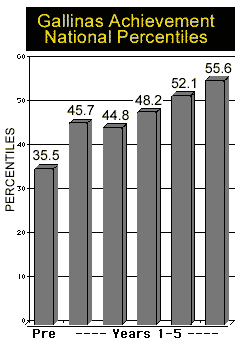
LESSON PLANS
Teamwork
Language Arts
ESL
Mathematics
Science
Social Studies
The Arts
PE
BACKGROUND
What is CAL?
Why use CAL?
How to use CAL
Research Briefs
Bibliography
Web Resources
Teacher Exchange
(Questions & Answers)
Why use Cross-Age Learning?
Following are comments by teachers:
- Carolyn: “Big Buddies”(older students) are able to teach or reinforce my own teaching, which enables me to do more for my students. And, because they are older, looked-up-to “peers,” little buddies are strongly influenced by positive attitudes and behaviors displayed by their big buddies.
- Danielle: Among just themselves, older students tend to act tough, even mean, before they become big buddies, but they have loving feelings that need to be expressed. Having a little buddy gives them opportunities to be gentle, caring, and nurturing, which makes them feel better about themselves and school. It’s a joy to see little buddies bring smiles to big buddies’ faces!
- Sandy: Instead of being off in our own little rooms, feeling isolated, we all have another teacher to work with, enjoy, learn from, and give recognition to. It sure feels good when another teacher sees you do something well or expresses appreciation for an idea you contribute.
- Leah: Teachers who usually do not talk about curriculum find commonalities and relationships that are on a deeper level of collaboration.
- Michael: Because students talk about and look forward to their Buddies sessions so much, sometimes wanting to go to school for them even when feeling sick, parents become very, very supportive. At our school, surveys of parents, Chamber of Commerce, and other community leaders have revealed extremely strong support for these cross-age learning teamwork efforts.
- Rebecca: This is a great way to build the reputation of schools while giving everyone some well-deserved appreciation.
- Dorinda: If everyone could have observed Room 5 last Friday as 40 K-1st and 3-4th grade students experimented with measuring their body parts using nonstandard units of measurement, they would have been amazed at the multiple skills being utilized! Children were reading, spelling, writing, drawing, talking, counting, estimating, checking for accuracy… And the students were so involved together that they handled the activity for 30 minutes while teachers observed and noted learnings, difficulties and interactions. It was great!
Following are samples of the kinds of achievement results which have been obtained once most or all of the teachers in a school participate in CAL:
SCHOOL-WIDE CAL EXAMPLES
Following are brief reports of schools which have used School-Wide Cross-Age Learning (CAL) for a number of years:

Gallinas Elementary School in San Rafael, California, USA, had about 400 students, kindergarten through 5th grade (K-5) when they decided to go school-wide after a CAL pilot with a few teachers. Gallinas has a relatively high proportion of low to lower-middle income and one-parent families, many of whom have primary languages other than English.
As indicated by the graph on this page, before the school initiated school-wide CAL, Gallinas students were achieving at a low average of only the 35th national percentile for Total Achievement (Reading, Language, and Mathematics).
By the end of only one year after CAL began, Gallinas achievement increased to the 45th percentile, and it continued to increase above the 55th percentile.
Other than a small cost to print a copy of Vocabulary Increases Power (VIP) for every student to use in school and at home the first year, Gallinas neither spent additional money nor added personnel for CAL. Teachers simply voluntarily organize and carry out CAL themselves, typically one school period per week. Parents and other community members strongly support CAL.
Neil Cummins Elementary School in Corte Madera, California, USA, is a K-5 school of nearly 600 students which is located only a few miles from Gallinas Elementary School.
Compared to Gallinas, Cummins has a higher proportion of middle to upper-middle income and two-parent families, almost all of whom have English as their primary language.
Cummins was at the 60th national percentile in its total achievement when it began school-wide CAL. Within a few years, it had grown to over the 80th percentile and continues at that high level today.
Like Gallinas, Cummins did not use additional money or personnel to start and maintain their CAL program. As at Gallinas, Cummins teachers simply organize CAL, usually one school period per week.